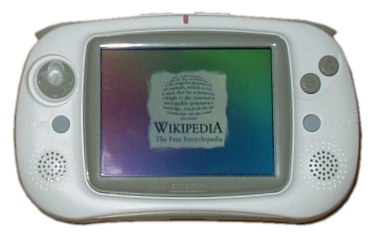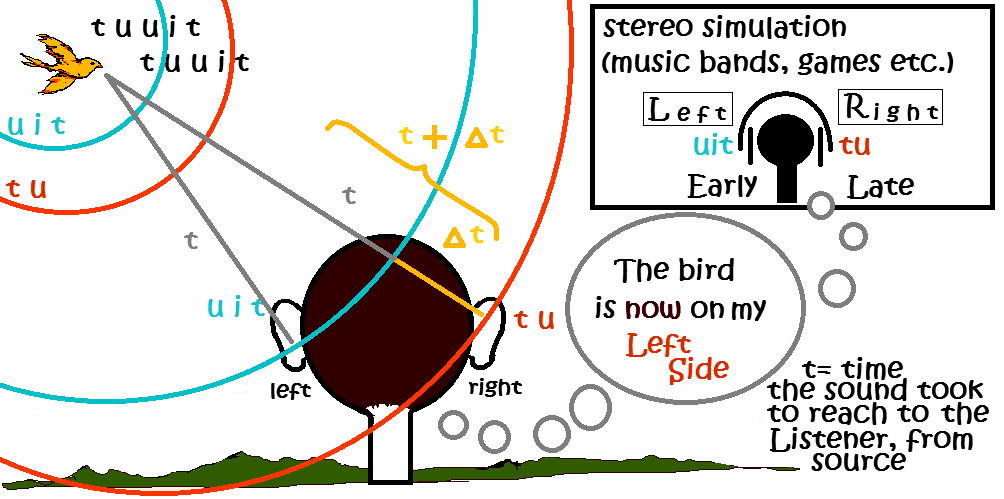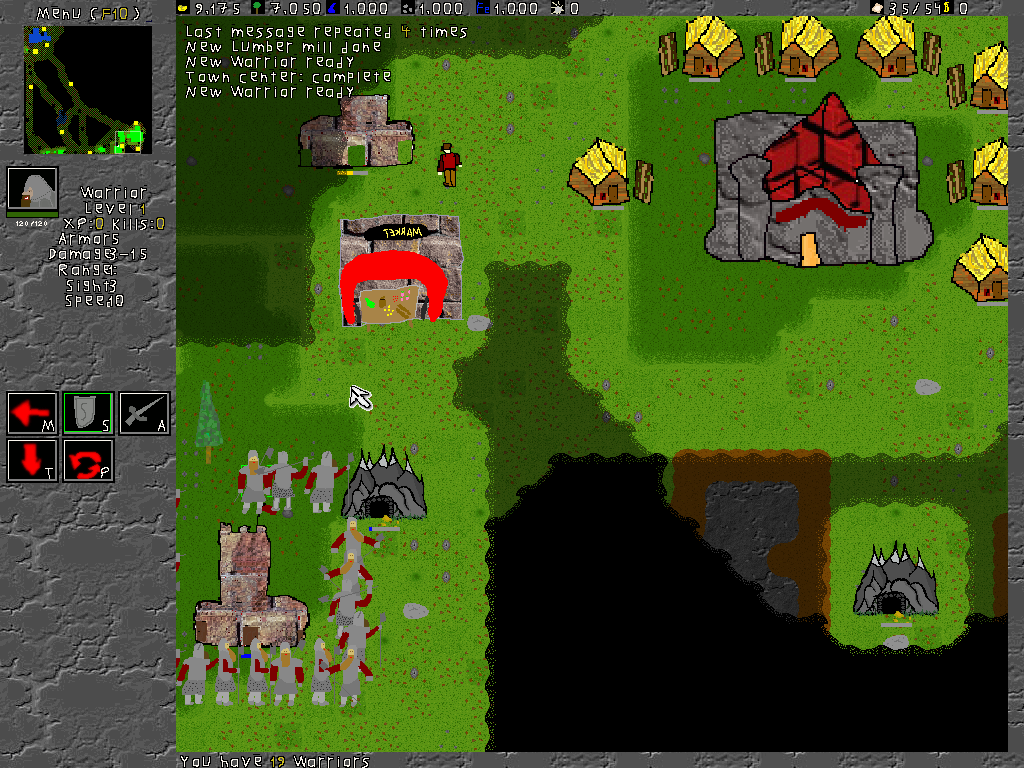|
GamePark
Game Park () was a South Korean company that was founded in 1996 and went bankrupt in March 2007. It is responsible for creating the GP32 and the never-released XGP. GamePark Holdings was founded by former employees of Game Park in 2005. Foundation Founded in 1996 in South Korea, Game Park entered the industry using government money. At the time, games in Korea were only made for PCs and Arcade. There was a law established after World War II that forbid importation of Japanese electronics. Some clones of Japanese consoles such as the Sega Saturn (cloned by Samsung) and Nintendo 64 (cloned by Hyundai) were holders of minor market shares. In a place where most games ran on the PC, a small place resided for video game consoles. To make changes, the South Korean government decided to fund a company that would create a console to compete against the monopolized Japanese market. A contest was held and Game Park was the winning company. Game Park was set to create the first portable ... [...More Info...] [...Related Items...] OR: [Wikipedia] [Google] [Baidu] |
GamePark Holdings
GPH, formerly known as GamePark Holdings, was a South Korean company responsible for creating the GP2X. It was founded by former employees of the game maker GamePark in 2005. History Several years after the release of the GP32, its maker GamePark began to design their next handheld. A disagreement within the company about the general direction of this system prompted many of the staff (including the majority of engineers) to leave and create their own company, GamePark Holdings, to create, produce and market a 2D handheld system that they saw as the evolution of the GP32. In contrast, GamePark began developing the XGP, a 3D system similar to the PlayStation Portable. The XGP was never released and in March 2007, the old company filed for bankruptcy. The name of the 2D console was conceived as the GPX2. Eventually, GPH would run into difficulty with it due to a possible trademark violation with the name of a Japanese printer, the GPX, being considered too similar. Potential con ... [...More Info...] [...Related Items...] OR: [Wikipedia] [Google] [Baidu] |
Gp32
The GP32 (GamePark 32) is a handheld game console developed by the South Korean company Game Park. It was released on November 23, 2001, in South Korea and distributed in some parts of Europe. History The GP32 was shown at E3 in 1999, 2000, 2001, and 2002. At one point, GamePark produced an unreleased unit with mobile phone functionality. Features The overall design is not unlike the original version of the Game Boy Advance. The GP32 is based on a 133 MHz ARM 9 CPU and 8 MB of SDRAM. Unlike other handheld gaming systems, which tend to be proprietary cartridge-based, the GP32 uses SmartMedia cards (SMC) for storing programs and data, making it accessible for amateur developers as no further development hardware is required. The console has an eight-way microswitch based mini-joystick controller, two main buttons ('A' and 'B'), two shoulder buttons on each side of the SMC slot ('L' and 'R') and two other menu buttons on each side of the screen ('SELECT' and 'START'), ... [...More Info...] [...Related Items...] OR: [Wikipedia] [Google] [Baidu] |
Tokyo Game Show
, commonly known as TGS, is a video game trade fair and convention held annually in September in the Makuhari Messe, in Chiba, Japan. It is presented by the Computer Entertainment Supplier's Association (CESA) and Nikkei Business Publications, Inc. The main focus of the show is on Japanese games, but some international video game developers use it to showcase upcoming releases/related hardware. The duration of the event is four days. The first two days of Tokyo Game Show are open only to industry attendees (business) and the general public can attend during the final two days. History The first Tokyo Game Show was held in 1996. From 1996 to 2002, the show was held twice a year: once in the Spring and once in Autumn (in the Tokyo Big Sight). Since 2002, the show has been held once a year. 2011’s show hosted over 200,000 attendees and the 2012 show bringing in 223,753. The busiest TGS was in 2016 with 271,224 people in attendance and 614 companies had exhibits. The event ... [...More Info...] [...Related Items...] OR: [Wikipedia] [Google] [Baidu] |
Sound Recording And Reproduction
Sound recording and reproduction is the electrical, Mechanical system, mechanical, electronic, or digital inscription and re-creation of sound waves, such as spoken voice, singing, instrumental music, or sound effects. The two main classes of sound recording technology are analog recording and digital recording. Acoustic analog recording is achieved by a microphone diaphragm that senses changes in atmospheric pressure caused by acoustics, acoustic sound waves and records them as a mechanical representation of the sound waves on a medium such as a phonograph record (in which a stylus cuts grooves on a record). In magnetic tape recording, the sound waves vibrate the microphone diaphragm and are converted into a varying electric current, which is then converted to a varying magnetic field by an electromagnet, which makes a representation of the sound as magnetized areas on a plastic tape with a magnetic coating on it. Analog sound reproduction is the reverse process, with a large ... [...More Info...] [...Related Items...] OR: [Wikipedia] [Google] [Baidu] |
Video
Video is an Electronics, electronic medium for the recording, copying, playback, broadcasting, and display of moving picture, moving image, visual Media (communication), media. Video was first developed for mechanical television systems, which were quickly replaced by cathode-ray tube (CRT) systems, which, in turn, were replaced by flat-panel displays of several types. Video systems vary in display resolution, Display aspect ratio, aspect ratio, refresh rate, color capabilities, and other qualities. Analog and digital variants exist and can be carried on a variety of media, including radio broadcasts, magnetic tape, optical discs, Video file format, computer files, and Streaming media, network streaming. Etymology The word ''video'' comes from the Latin verb ''video,'' meaning to see or ''videre''. And as a noun, "that which is displayed on a (television) screen," History Analog video Video developed from facsimile systems developed in the mid-19th century. Early mecha ... [...More Info...] [...Related Items...] OR: [Wikipedia] [Google] [Baidu] |
Computer And Video Game Development
game development (sometimes shortened to gamedev) is the process of creating a video game. It is a multidisciplinary practice, involving programming, design, art, audio, user interface, and writing. Each of those may be made up of more specialized skills; art includes 3D modeling of objects, character modeling, animation, visual effects, and so on. Development is supported by project management, production, and quality assurance. Teams can be many hundreds of people, a small group, or even a single person. Development of commercial video games is normally funded by a publisher and can take two to five years to reach completion. Game creation by small, self-funded teams is called independent development. The technology in a game may be written from scratch or use proprietary software specific to one company. As development has become more complex, it has become common for companies and independent developers alike to use off-the-shelf "engines" such as Unity, Unreal Engine or God ... [...More Info...] [...Related Items...] OR: [Wikipedia] [Google] [Baidu] |
Open Source
Open source is source code that is made freely available for possible modification and redistribution. Products include permission to use and view the source code, design documents, or content of the product. The open source model is a decentralized software development model that encourages open collaboration. A main principle of Open-source software, open source software development is peer production, with products such as source code, blueprints, and documentation freely available to the public. The open source movement in software began as a response to the limitations of proprietary code. The model is used for projects such as in open source appropriate technology, and open source drug discovery. Open source promotes universal access via an open-source or free license to a product's design or blueprint, and universal redistribution of that design or blueprint. Before the phrase ''open source'' became widely adopted, developers and producers used a variety of other terms, suc ... [...More Info...] [...Related Items...] OR: [Wikipedia] [Google] [Baidu] |
Video Game
A video game or computer game is an electronic game that involves interaction with a user interface or input device (such as a joystick, game controller, controller, computer keyboard, keyboard, or motion sensing device) to generate visual feedback from a display device, most commonly shown in a video format on a television set, computer monitor, flat-panel display or touchscreen on handheld devices, or a virtual reality headset. Most modern video games are audiovisual, with Sound, audio complement delivered through loudspeaker, speakers or headphones, and sometimes also with other types of sensory feedback (e.g., haptic technology that provides Touch, tactile sensations). Some video games also allow microphone and webcam inputs for voice chat in online gaming, in-game chatting and video game livestreaming, livestreaming. Video games are typically categorized according to their hardware platform, which traditionally includes arcade video games, console games, and PC game, comp ... [...More Info...] [...Related Items...] OR: [Wikipedia] [Google] [Baidu] |
Stereo
Stereophonic sound, commonly shortened to stereo, is a method of sound reproduction that recreates a multi-directional, 3-dimensional audible perspective. This is usually achieved by using two independent audio channels through a configuration of two loudspeakers (or stereo headphones) in such a way as to create the impression of sound heard from various directions, as in natural hearing. Because the multi-dimensional perspective is the crucial aspect, the term ''stereophonic'' also applies to systems with more than two channels or speakers such as quadraphonic and surround sound. Binaural sound systems are also ''stereophonic''. Stereo sound has been in common use since the 1970s in entertainment media such as broadcast radio, recorded music, television, video cameras, cinema, computer audio, and the Internet. Etymology The word ''stereophonic'' derives from the Greek (''stereós'', "firm, solid") + (''phōnḗ'', "sound, tone, voice") and it was coined in 1927 by ... [...More Info...] [...Related Items...] OR: [Wikipedia] [Google] [Baidu] |
Princess Maker 2
is a 1993 Japanese video game developed by the company Gainax. It is the second installment in the ''Princess Maker'' series of social simulation games where the player must act as a parental figure and raise a young girl. The player takes the role of a war hero who raises a girl to the age of 18. At the end of the game, the daughter goes into a line of work; what this work is, how much talent she has for it, her marital life, and her overall happiness all depend on the player's actions throughout the game. After the initial release for the Japanese PC-9801 personal computer, it has been subsequently released for many other personal computers and Video game consoles. The game has been translated into English, Korean, and Chinese. Story The game takes place in a fantasy world roughly modeled after Middle Ages, medieval Europe with the starting year is given as 1210 K.D. The player's character is a famous warrior who defended the kingdom from an invasion by Lucifon, the Prince of ... [...More Info...] [...Related Items...] OR: [Wikipedia] [Google] [Baidu] |
Video Game Development
Video game development (sometimes shortened to gamedev) is the process of creating a video game. It is a multidisciplinary practice, involving programming, design, art, audio, user interface, and writing. Each of those may be made up of more specialized skills; art includes 3D modeling of objects, character modeling, animation, visual effects, and so on. Development is supported by project management, production, and quality assurance. Teams can be many hundreds of people, a small group, or even a single person. Development of commercial video games is normally funded by a video game publisher, publisher and can take two to five years to reach completion. Game creation by small, self-funded teams is called indie game, independent development. The technology in a game may be written from scratch or use proprietary software specific to one company. As development has become more complex, it has become common for companies and independent developers alike to use off-the-shelf "engines ... [...More Info...] [...Related Items...] OR: [Wikipedia] [Google] [Baidu] |







